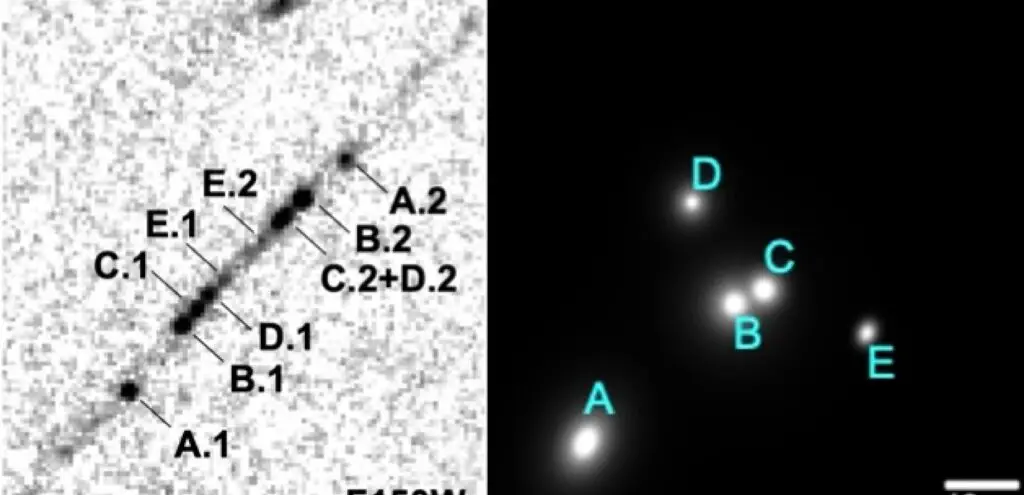
A Groundbreaking Discovery
Astronomers have recently made a groundbreaking discovery by observing star clusters within a galaxy from the early Universe. This observation provides new insights into the formation and evolution of galaxies shortly after the Big Bang.
The Observation
Using advanced telescopes, including the Hubble Space Telescope and the James Webb Space Telescope, scientists were able to peer back in time to when the Universe was only a few hundred million years old. They identified distinct clusters of stars within a galaxy, marking the first time such formations have been observed at such an early stage in cosmic history.
Significance of Star Clusters
Star clusters are groups of stars that are gravitationally bound and have formed from the same molecular cloud. They are crucial to understanding the processes of star formation and the evolution of galaxies. Observing these clusters in the early Universe provides a direct glimpse into the conditions and mechanisms that prevailed shortly after the Big Bang.
Insights into Galactic Evolution
The discovery of these star clusters sheds light on the processes that led to the formation of galaxies. It suggests that even in the early Universe, galaxies were not uniform but had already begun to develop complex structures. This challenges previous models of galactic evolution and suggests that the building blocks of galaxies, such as star clusters, formed much earlier than previously thought.

Methods and Technology
The observation was made possible through the use of cutting-edge technology. The James Webb Space Telescope, with its ability to see in the infrared spectrum, allowed astronomers to look further back in time than ever before. The Hubble Space Telescope provided complementary data, helping to confirm the presence of the star clusters.
Future Research
This discovery opens up new avenues for research. Scientists aim to study more galaxies from the early Universe to see if similar star clusters can be found. This will help to build a more comprehensive picture of how galaxies and their components have evolved over billions of years.
Conclusion
The observation of star clusters within a galaxy in the early Universe marks a significant milestone in the field of astronomy. It not only provides new insights into the formation and evolution of galaxies but also showcases the incredible capabilities of modern telescopes. As research continues, we can expect to uncover even more about the origins of the cosmos and the processes that shaped the Universe as we know it.
